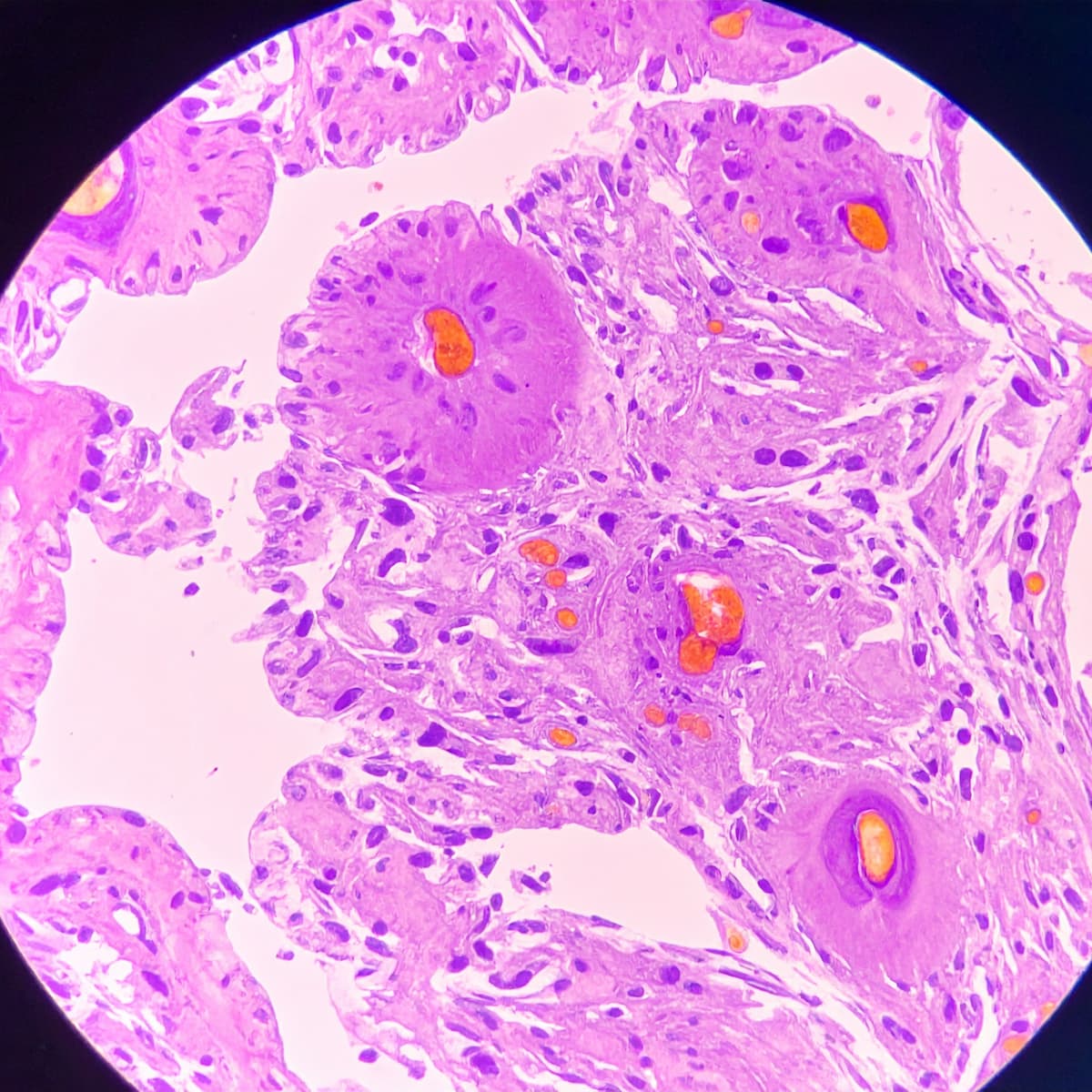Ovarian cancer: ©Dr_Microbe – stock.adobe.com

Despite initial success with surgery and chemotherapy in advanced-stage ovarian cancer, most patients experience recurrence due to undetectable minimal residual disease (MRD). However, research is looking to overcome this and provide patients with longer, more durable remissions.
Research from MD Anderson Cancer Center, led by Amir Jazaeri, MD, and primarily funded by Break Through Cancer, that explores 2 methods for MRD detection: second-look laparoscopy (SLL) and circulating tumor DNA (ctDNA), also known as liquid biopsy. Both methods are shown to be highly prognostic for patient outcomes, identifying high-risk patients when conventional methods like CA 125 and CT scans show no evidence of disease. Crucially, SLL provides access to MRD tissue, enabling a deeper biological understanding of chemoresistance and potential therapeutic targets. The findings highlight the urgent need for MRD-targeted investigational therapies to improve cure rates and suggest the potential for ctDNA as an early surrogate endpoint in future clinical trials.
In an interview with Targeted Oncology, Jazaeri, vice chair for clinical research and the director of the Gynecologic Cancer Immunotherapy Program in the Department of Gynecologic Oncology at MD Anderson, discusses this study and its clinical implications.
The Problem of MRD in Ovarian Cancer
“The problem with ovarian cancer, unfortunately, is that most of these patients experience a recurrence,” Jazaeri explains. “But the thing about the cancer coming back is that it doesn’t really come back—it never leaves the body. This really has been a problem for many decades with ovarian cancer that we know there is residual disease that we just can’t detect.”
Conventional detection methods like the CA 125 blood tumor marker and radiologic imaging lack the sensitivity to identify this microscopic disease, and remaining cancer cells are resistant to initial treatment. These resistant cells represent a significant knowledge gap and a barrier to achieving personalized, novel therapies designed to eradicate MRD and, ultimately, increase cure rates in ovarian cancer.
Novel Methods for MRD Detection and Their Prognostic Value
Microscopic, photorealistic image of ovarian cancer cells – Generated with Adobe Firefly

As Jazaeri explains, SLL is a minimally invasive surgery that involves looking inside the abdomen, performing multiple biopsies, and aspirating saline containing floating cells for pathology analysis.
“Pathology [looks] for persistence of cancer cells in a way that’s much more sensitive than the conventional CA125 blood test and CT scan,” Jazaeri says.
While “second look” surgeries were historically performed via laparotomy and fell out of practice due to morbidity, SLL has now become significantly less morbid to assess residual disease.
“In this study, we found that of the patients that were positive for residual disease by surgery, about half of them were picked up by the blood test, circulating tumor DNA. And then there were a few patients that were negative by surgery, but they were positive by the blood test,” says Jazaeri. These were patients that would otherwise be classified as being in clinical remission by CA 125 and imaging.
Further, Jazaeri says, “When we look at the prognosis, we see that both surgery and the circulating tumor DNA by the Signatera assay, if you were positive for residual disease, that showed a poor prognosis compared to those patients that were negative.” Jazaeri clarifies that a negative test did not mean cancer never recurred, just that it was much less likely to and typically recurred much later.
SLL positivity was also found to be an independent prognostic factor for overall survival (HR 4.40, 95% CI, 1.37–14.21, P =.013), indicating a 4.4 times higher risk of death for those with residual disease detected at the time of SLL.
Patients who were negative by both SLL and ctDNA had the longest median progression-free survival of 36.4 months, while those positive by both had the shortest at 6.4 months.
Clinical Implications and Future Directions: Identifying High-Risk Patients
“This research gives us 2 different ways of identifying high-risk patients who, despite having a normal CT and despite having a normal CA 125, are at very high risk of recurrence,” Jazaeri says.
The ability to identify MRD means clinicians can “consider offering those patients innovative treatments, investigational treatments, and clinical trials at that point, rather than waiting until the cancer comes back and gains a foothold,” he adds. This is crucial because when disease burden is lowest, there is a greater possibility of eradicating residual disease to increase cures.
CtDNA as a Surrogate Endpoint
Microscopic image of DNA – Generated with Adobe Firefly

The ease of checking ctDNA and its ability to be performed serially, along with quantifying the amount of ctDNA, makes it a promising “new early surrogate end point in the next generation of clinical trials,” Jazaeri says. “We don’t have to wait until cancer progression. We may know much earlier whether the treatment is likely to be useful or not.”
This groundbreaking research significantly advances the understanding and approach to managing advanced ovarian cancer. By demonstrating the prognostic power of SLL and ctDNA in detecting MRD, it opens new avenues for identifying high-risk patients earlier. Importantly, the ability to analyze MRD tissue provides unprecedented insights into the biological mechanisms of chemoresistance and identifies potential new therapeutic targets.
“We hope to understand the biological basis of this minimal residual disease and try to come up with better treatments that directly are based on the biology of minimal residual disease, whereas today’s maintenance therapies are not,” Jazaeri says.
This shift towards MRD-directed therapies and the use of ctDNA as an early end point in clinical trials holds immense promise for transforming ovarian cancer treatment.
REFERENCE: Knisely A, Dai Y, Barlow GL, et al.
Surgical and blood-based minimal residual disease in patients with ovarian cancer after frontline therapy: Clinical outcomes and translational opportunities. Clin Cancer Res. 2025 Aug 1. doi: 10.1158/1078-0432.CCR-25-0512. Online ahead of print.
